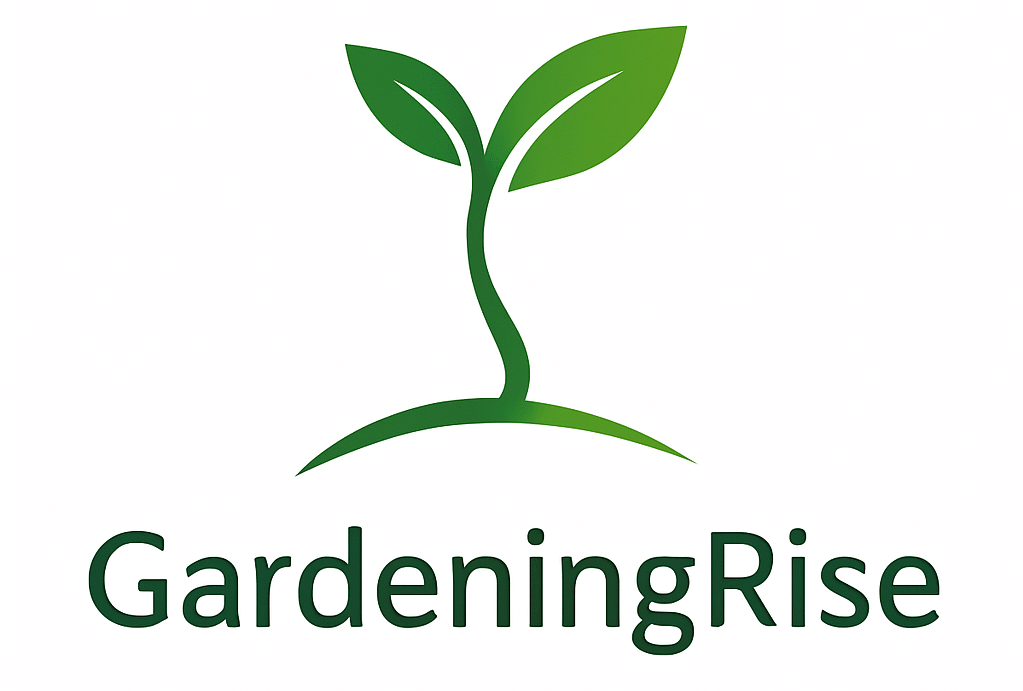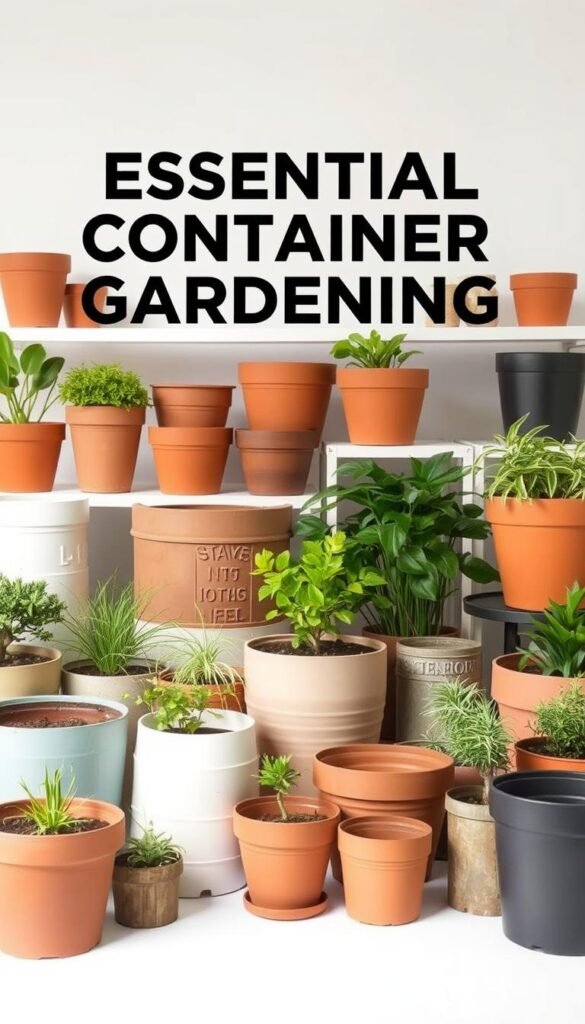Your plants’ success starts with their home. Just like people thrive in the right environment, container gardening lets you match each plant’s needs to its ideal pot. Whether you’re growing herbs on a balcony or tropical plants indoors, the vessel you pick directly impacts root health and growth.
Material matters more than you might think. Terra cotta breathes well for succulents, while plastic retains moisture for thirsty veggies. A ceramic pot adds style but needs proper drainage holes. Without the right setup, even hardy plants can struggle with soggy roots or drought stress.
Good choices balance looks and function. Small pots work for compact herbs, but tomatoes demand deep containers. Urban gardeners love lightweight options, while frost-prone areas need durable materials. This guide will help you choose right so every plant gets what it needs to flourish.
Key Takeaways
- Your container directly affects water control, root health, and plant survival
- Materials like terra cotta, plastic, and ceramic serve different growing needs
- Drainage holes prevent root rot – never skip this feature
- Container gardening adapts to patios, windowsills, and tight spaces
- Match pot size and material to your plant’s growth habits
Introduction: Embracing the World of Container Gardening
The secret to thriving greenery lies in their pots. Unlike traditional gardens, container gardening lets you create micro-environments tailored to each plant’s needs. Whether you’re growing basil on a fire escape or hydrangeas on a patio, your vessel acts as both home and life support system.

Why Your Container Choice Matters
Pots directly influence root breathing and water flow. A breathable clay pot prevents overwatering for succulents, while sealed ceramic keeps tropical plants hydrated. Without proper drainage, even drought-tolerant varieties drown. Smart selections prevent 80% of common growth issues.
The Benefits of Container Gardening for Your Plants
Portability tops the list – move sun-loving herbs chasing light or shield delicate blooms from storms. Urban dwellers maximize balcony space with stackable containers, while renters avoid digging up yards. Design flexibility lets you mix colors and textures like living art.
Seasoned growers and newbies alike gain control. Self-watering pots simplify care for busy schedules. Elevated planters reduce back strain during harvests. You decide the soil blend, pH levels, and feeding schedule – no battling native clay or pests.
Understanding Plant Needs and Container Requirements
Roots whisper their needs through the soil – if you listen closely. Three factors make or break your green companions: hydration balance, airflow for roots, and space to stretch underground. Get these right, and your plants will reward you with vibrant growth.

Water, Drainage, and Root Space Essentials
Plants crave consistent moisture without wet feet. Use your finger to test soil dampness – if the top inch feels dry, it’s watering time. Overwatering drowns roots faster than drought in most cases.
Good drainage starts with holes at the pot’s base. Try this trick: After watering, check if excess liquid escapes within 30 seconds. If not, add more holes using a ¼-inch drill bit. Elevate pots with feet or stones to prevent water pooling.
Matching Container Depth to Your Plant’s Root System
Shallow-rooted herbs like basil thrive in 6-inch pots, while tomato plants need 18-inch depths. Always leave 2 inches between root balls and container walls. Tight spaces stunt growth, but oversized pots hold excess water that rots roots.
- Leafy greens: 8-12 inches deep
- Carrots/radishes: 12+ inches
- Succulents: 4-6 inches
Remember: Healthy roots mean happy plants. Your container acts as both protector and provider – choose wisely, and watch your garden flourish.
Choosing the Right Containers for Different Plant Types
Just like shoes, one container size doesn’t fit all plants. Leafy veggies need room to spread their roots, while compact herbs prefer cozy spaces. Let’s explore how to match your greens with their perfect partners.
Tailoring Your Container Selection for Vegetables, Herbs, and Flowers
Tomatoes and peppers are hungry giants – they demand 5-gallon pots minimum. Their deep roots crave space and nutrients. For basil or mint? A 10-inch-wide planter works magic. Always check seed packets for mature size specs.
Blooming flowers like petunias thrive in wide, shallow containers. But sunflowers? They’ll topple small pots once they stretch skyward. Mix functional drainage with stylish designs – glazed ceramic works for indoor herbs, while fabric grow bags suit patio veggies.
How Container Size Influences Plant Health
Too-small pots starve roots. Oversized ones drown them in soggy soil. Aim for 2 inches of extra space around root balls. Here’s a quick guide:
- Cherry tomatoes: 18-inch-deep containers
- Bell peppers: 14-inch diameter pots
- Parsley: 8-inch planters
Pro tip: Upgrade pots gradually as plants grow. Start seedlings in 4-inch containers, then move to final homes after 6 weeks. This prevents shock and conserves soil. Your vegetables will thank you with bushels of produce!
Material Matters: Terra Cotta, Plastic, and Ceramic Pots

Your pot’s material decides whether plants thrive or barely survive. Clay breathes, plastic endures, and ceramic dazzles – but each shines in specific scenarios. Let’s break down how these three popular options perform in real-world gardening conditions.
Terra Cotta: Pros, Cons, and Ideal Uses
Clay pots act like soil air conditioners. Their porous walls let roots breathe while wicking away excess moisture. Perfect for succulents and Mediterranean herbs that hate wet feet. But they dry out fast in full sun – water twice weekly during heatwaves.
Winter care matters. Unprotected clay cracks in freezing temps. Move these pots indoors or wrap them in burlap when frost threatens. Their earthy look complements rock gardens and desert landscapes beautifully.
Plastic Pots: Durability and Versatility in Everyday Gardening
Lightweight and nearly unbreakable, plastic dominates balcony gardening. These vessels retain water better than clay, making them ideal for thirsty veggies in sunny spots. Dark colors absorb heat – use lighter shades in hot climates to protect roots.
Here’s why gardeners love them:
| Material | Weight | Moisture | Best For |
|---|---|---|---|
| Terra Cotta | Heavy | Quick-dry | Succulents, herbs |
| Plastic | Light | Retains | Tomatoes, annuals |
| Ceramic | Medium | Moderate | Indoor plants |
Ceramic pots bring elegance to indoor jungles. Their glazed surfaces slow evaporation, helping peace lilies and ferns stay hydrated. Always check for drainage holes – some decorative pieces lack this crucial feature. Pair them with well-draining soil to prevent root rot.
In shade gardens, ceramic’s moisture retention becomes an asset. But avoid using these outdoors in freezing weather – they’ll chip or crack. For year-round curb appeal, choose frost-proof options or seasonal displays.
Exploring Alternative Container Materials
Break free from ordinary pots and discover materials that spark joy in your garden. Beyond classic clay and plastic, creative options blend durability with personality. These alternatives let you craft eye-catching displays while solving specific growing challenges.

Concrete, Hypertufa, and Metal Options for Stability and Style
Concrete planters anchor windy patios like boulders. Their weight makes them ideal for tall plants prone to tipping. Hypertufa – a lightweight concrete-peat mix – offers similar rugged charm without back strain. Both materials weather beautifully, developing mossy patinas over time.
Metal containers bring industrial flair to urban gardens. Galvanized troughs work wonders for herbs, while copper pots add warmth to entryways. Line them with landscape fabric to prevent soil from touching metal surfaces. Avoid dark colors in sunny spots – they cook roots faster than a summer barbecue.
Wooden Containers, Hanging Baskets, and Creative Repurposing Ideas
Cedar boxes make perfect raised beds for strawberries. Their natural rot resistance lasts 5-7 years untreated. For vertical interest, hanging baskets turn unused airspace into blooming paradises. Use coco liners in wire baskets to retain moisture between waterings.
Upcycle household items into conversation starters:
- Old colanders → strawberry planters (built-in drainage!)
- Wine crates → succulent displays
- Vintage teapots → miniature herb gardens
These unconventional choices showcase your personality while reducing waste. Rotate seasonal plants in repurposed containers for year-round curb appeal that neighbors will envy.
DIY Tips: Drilling and Repurposing Containers Without Drainage Holes

Transform any vessel into a plant paradise with simple tools. Those gorgeous pots lacking drainage become root rot traps without modification. A 10-minute DIY fix protects your greens while letting you use favorite containers.
How to Safely Drill Drainage Holes in Various Materials
Grab your drill – we’ll make quick work of this project. For terra cotta, use a masonry bit and low speed to prevent cracking. Place the pot upside down on a towel, and apply gentle pressure. Plastic containers need standard twist bits – drill slowly to avoid melting the material.
Ceramic requires diamond-tipped bits and patience. Mark your spot with painter’s tape first to prevent slippage. Always wear safety goggles and gloves. Pro tip: Add 3-5 holes bottom for good drainage, spaced evenly across the surface.
Can’t risk drilling grandma’s vintage planter? Nest a plastic pot with holes inside the decorative container. Lift the inner vessel with pebbles to create an air gap. This hack lets you showcase heirlooms without compromising root health.
Remember:
- Start with smaller holes – you can always widen them later
- Use water as lubricant when drilling ceramic or glass
- Clean debris thoroughly before planting
Determining the Perfect Container Size for Your Plant
Finding the Goldilocks zone for your green friends prevents more problems than you’d expect. A pot that’s just right allows roots to spread without drowning in excess soil. Let’s explore how to strike this balance for thriving container plants.
Avoiding Over-Sized Pots and Preventing Root Bound Issues
Too much space isn’t always better. Oversized containers hold water like swimming pools, leading to soggy roots and fungal issues. But cramped quarters strangle growth – check for roots circling the bottom or poking through drainage holes.
| Plant Type | Ideal Pot Diameter | Depth Requirement |
|---|---|---|
| Tomatoes | 18-24 inches | Deep (18+ inches) |
| Succulents | 4-6 inches | Shallow (6 inches) |
| Leafy Greens | 12 inches | Medium (8-12 inches) |
Guidelines for Incremental Size Increases
Upgrade pots like you’re buying kids’ shoes – one size up at a time. Start seedlings in 4-inch nursery pots, then move to 6-8 inch homes when roots fill 75% of the space. This container sizing guideline helps plants adjust without shock.
For vegetables, increase container volume by 2 gallons each transition. Herbs prefer 1-2 inch jumps in diameter. Always leave 2 fingers’ width between root balls and pot walls – this gives room to grow while maintaining proper moisture levels.
Remember: Your plant’s roots will tell you when it’s time. Gently lift it every 3 months to check for dense root networks. Healthy growth should look like a well-combed beard, not a tangled bird’s nest.
Enhancing Functionality and Style in Your Container Garden
Your container setup can dazzle the eye while nurturing growth. Blending practical features with artistic flair turns ordinary planters into living masterpieces. Let’s explore how to elevate your garden’s personality without sacrificing plant health.
Incorporating Decorative Containers and Colorful Accents
Vibrant glazed pots make flowers pop against neutral walls. Try cobalt blue for golden marigolds or sage green for crimson petunias. Mix matte and glossy finishes in the same space – the contrast adds depth to your arrangement.
Unexpected materials bring whimsy to your gardening projects. Upcycle vintage watering cans into strawberry homes or paint terra cotta pots with geometric patterns. Just ensure decorative choices include drainage – beauty shouldn’t trump function.
Creative Ideas for Combining Utility with Visual Appeal
Hanging baskets double your planting area while adding vertical interest. Pair trailing ivy with upright lavender for texture contrast. Use macramé hangers for bohemian vibes or sleek metal chains for modern edges.
Group planters in odd numbers for dynamic displays. A trio of graduated pots – small, medium, large – creates rhythm. Vary heights with stacked crates or pedestal stands. This variety keeps eyes moving across your garden.
Remember: Your container choices tell a story. A mosaic planter whispers creativity, while crisp white boxes shout minimalist elegance. Match your style to your plants’ needs, and you’ll create spaces that nourish both roots and souls.
Conclusion
Your green companions thrive when their pots match their personality and needs. Material choices shape their world – clay breathes for thirsty tomatoes, ceramic glams up shady corners, while plastic handles sunny pepper patches. Size matters just as much: deep pots let roots stretch, shallow ones keep lettuce happy.
Never underestimate good drainage. Those extra holes you drilled? They’re lifelines preventing soggy disasters. Winter-proof containers protect roots during frost, while lightweight options let you chase sunlight across patios.
Experiment fearlessly. Try ceramic planters for vibrant flowers in partial shade, or test fabric grow bags with heat-loving peppers. Mix textures and colors – a rustic wooden planter beside sleek metal pots adds visual spice. Just ensure every container holds quality soil and drains well.
Tomatoes demand space, herbs crave coziness, and flowers flourish with room to bloom. Take time to pair each plant with its perfect partner. Your efforts now pay off in lush growth and bountiful harvests. Happy gardening – may your containers burst with life all season long!






